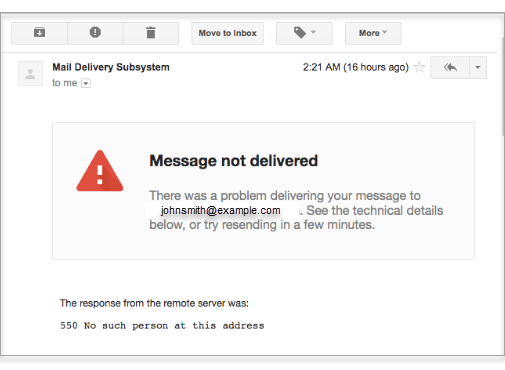Why Emails Go to Spam: Common Causes and Solutions
Stop Emails Landing in Spam: Common Causes and Solutions
Is your inbox missing important emails you sent? Don't worry, you're not alone. Even well-intended emails can be flagged as spam by mailbox providers with strong security filters.
This guide explores the top reasons emails land in spam and provides solutions to ensure your messages reach their intended inboxes. Learn how to avoid common mistakes and optimize your email-sending practices for better deliverability
Common Causes of Emails Landing in Spam
Here are the top reasons why your email might be landing in the spam folder:
Solutions to Improve Email Deliverability
Ensuring Accurate Sender Information
Ensuring your emails aren't flagged as spam hinges on furnishing precise and transparent sender details. Verify that all elements such as From, To, Reply-To, and routing particulars distinctly represent either you or your organization. Discover strategies to steer clear of typical errors and enhance your email-sending techniques to improve deliverability.
Avoiding Spam Trigger Words
Email spam filters scrutinize the content of your emails, particularly for suspicious "trigger words" that may lead to them being flagged as spam. Words or phrases that sound manipulative, needy, or overly promotional can trigger spam filters. Here are examples of such trigger words:
- Call now
- Get started now
- Take action
- This won't last
- Offer expires
Optimizing Email Headlines
Your email's subject line plays a crucial role in its deliverability. Research shows that 69 percent of recipients judge emails as spam based solely on the subject line. Follow these best practices to craft effective subject lines:
- Avoid excessive capitalization or exclamation points
- Avoid making false promises
- Avoid overly pushy or sales-oriented language
Addressing Inactive Email Addresses
Sending emails to inactive addresses can result in them bouncing back, indicating that they were not delivered.

Continuously sending emails to inactive addresses can lead to penalization by spam filters, increasing the likelihood of your emails being marked as spam. The solution is to regularly clean your email list and remove inactive addresses.
Maintaining Proper Spelling and Grammar
Spam filters are vigilant about spelling and grammatical errors, which can cause emails to be filtered as spam. To avoid this, meticulously proofread each email before sending it. While spell checkers can be helpful, they may not catch every mistake, so manual proofreading is essential. Consider using tools like Grammarly for additional assistance.
Implementing Effective Email Design
Ensure your emails adhere to best design practices to enhance deliverability:
- Make emails mobile-friendly and compatible with desktops
- Maintain brand consistency in colors, fonts, images, and tone
- Avoid relying solely on images and maintain an appropriate image-to-text ratio
- Keep email content concise, clear, and easily digestible
Summary
Adhering to the recommended strategies provided in this guide can greatly enhance the chances of your emails being successfully delivered to their intended recipients. It's crucial to invest effort into creating professional and organized emails, as this not only reduces the risk of being marked as spam but also enhances your credibility and professionalism in the eyes of your audience.
Additionally, for added security measures, it's advisable to opt for a reputable email marketing platform offering advanced deliverability tools and assistance in managing your contact lists effectively.
If you need further assistance, feel free to contact us via Chat or Phone:
- Chat Support - While on our website, you should see a CHAT bubble in the bottom right-hand corner of the page. Click anywhere on the bubble to begin a chat session.
- Phone Support -
- US: 888-401-4678
- International: +1 801-765-9400
You may also refer to our Knowledge Base articles to help answer common questions and guide you through various setup, configuration, and troubleshooting steps.